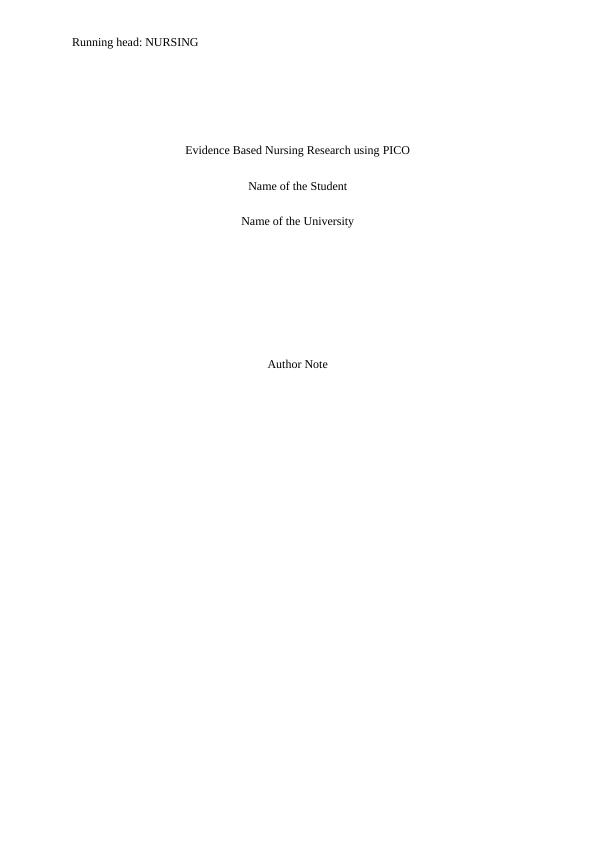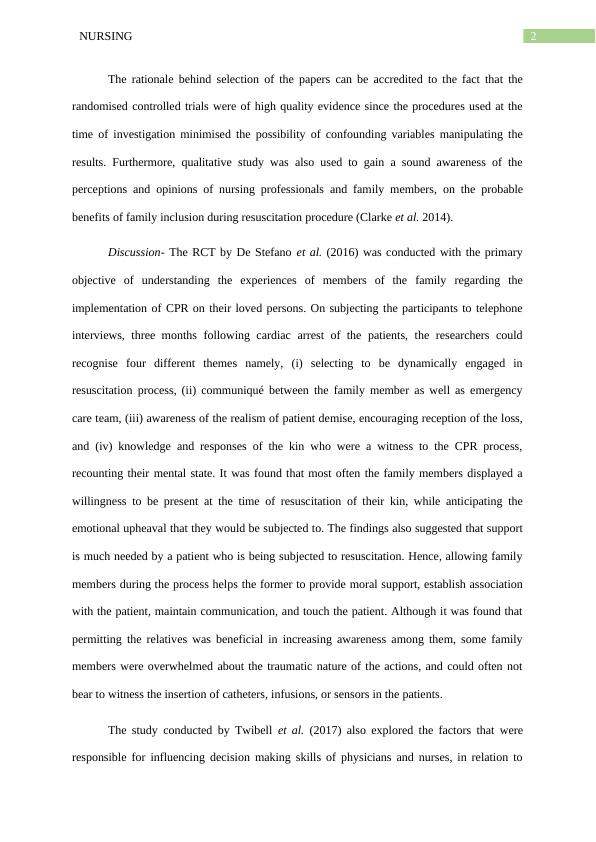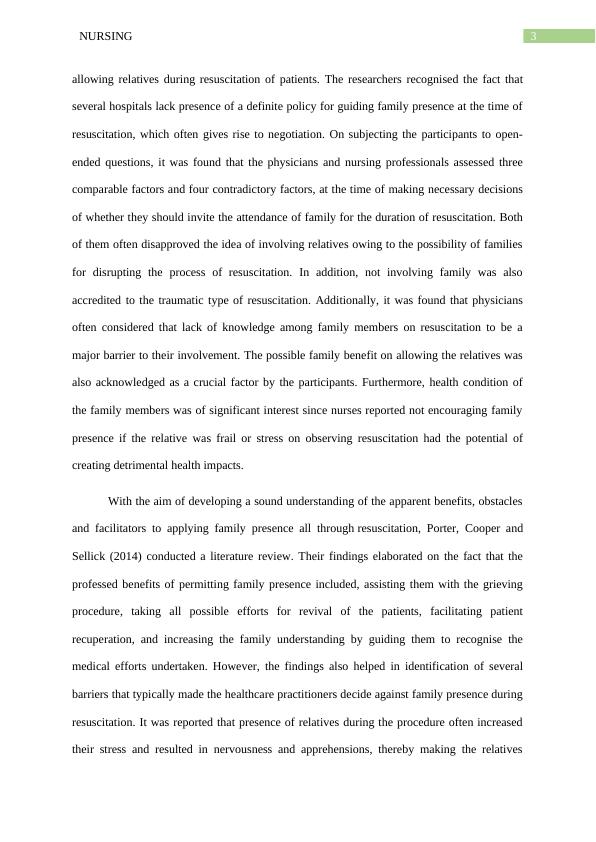Evidence Based Nursing Research using PICO
Select a clinical scenario and answer the question that follows, focusing on areas of clinical uncertainty in wound care, asthma treatment, or nursing approaches.
11 Pages1946 Words45 Views
Added on 2023-03-23
About This Document
This research paper explores the impact of family presence during resuscitation in acute care settings. The study is based on evidence-based nursing research using the PICO framework. The findings suggest that allowing family members to be present during resuscitation can increase their understanding of the clinical procedure, alleviate anxiety and depression, and provide them with reassurance that all possible efforts are being made to revive their loved ones. However, it is important to develop transparent policies and provide intensive educational interventions to ensure the safety and well-being of both the patient and the family members.
Evidence Based Nursing Research using PICO
Select a clinical scenario and answer the question that follows, focusing on areas of clinical uncertainty in wound care, asthma treatment, or nursing approaches.
Added on 2023-03-23
ShareRelated Documents
End of preview
Want to access all the pages? Upload your documents or become a member.
Involvement of The family in Resuscitation of Their Loved Ones
|6
|1787
|92
Evidence Based Nursing
|8
|1972
|60
Presence of Family Members During Resuscitation: Pros and Cons
|7
|1954
|88
Presence of Family During Acute Resuscitation
|7
|1736
|271
Critique and Appraisal on Nursing Research
|12
|2693
|101
Involvement of Family Members in Resuscitation: A Literature Review
|7
|2072
|206




